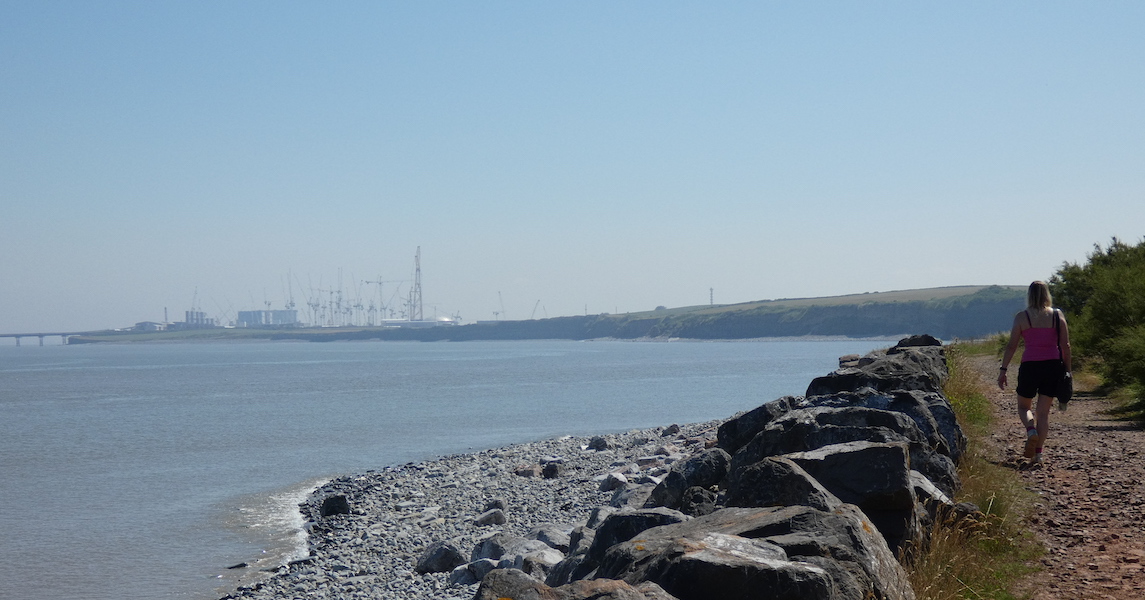We went to Cannington, the village in Somerset where the artist Caroline Locke grew up, where the Future Machine will visit and Caroline will ring her Tree Charter Bell as we plant trees with a new generation of school children.
Cannington is an old Saxon village, with medieval manors mentioned in the Domesday Book, an old walled botanical garden in the centre of the village next to an old beautiful church and convent. Cottages and new houses surround the farms and fields rolling up to the Quantock Hills and down the River Parrett to the sea. Above the village, on a hill with a wood, is the site of an ancient iron age fort where many graves were found, it is thought it might have originally been a Pagan cemetery. The hill is now quarried. Lower down, where the new bypass has been built for workers and trucks to get to Hinkley Point C nuclear power station, evidence was found of a bronze age settlement and Roman buildings.
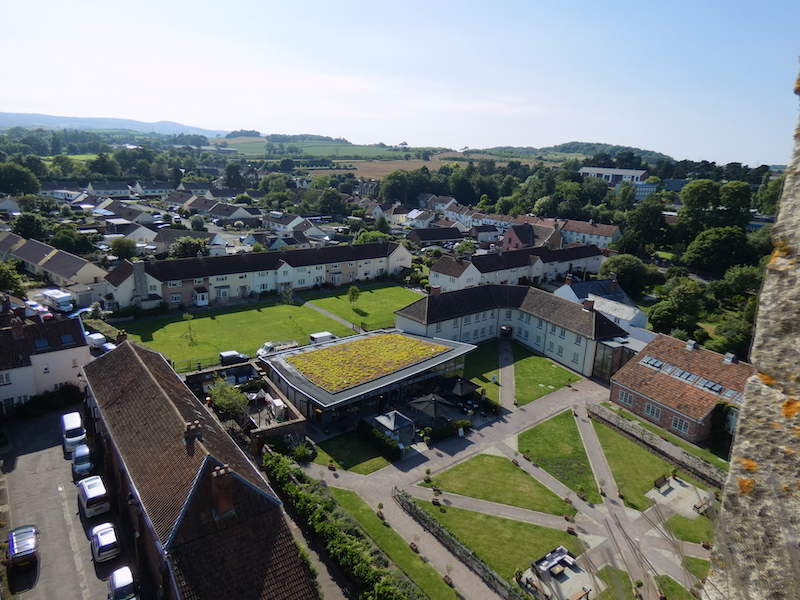
The house that Caroline grew up in is by a brook where children were playing in the water on the hot and sunny day we visited, next to the Jubilee Gardens. Caroline’s Dad – Maurice Locke – was the local Policeman, Parish Councillor and Church Warden, deeply embedded in the village and the local community. Caroline has created a memorial sculpture for her Dad in the Jubilee Gardens, wherever we met people in the village they remembered her Dad with great fondness.

We started the day with a visit to Cannington Primary School. We met the wonderful headteacher Clare Nurse, who had kindly agreed for us to meet two children from each class in the playground to tell them about the tree planting, the bell and the Future Machine. I handed them a Future Quest printed out by the machine for each class and instructions for writing or drawing messages for the future that we will record into the Future Machine (reading them out or describing the drawings). We had posters of the Future Machine and the Tree Charter Bell to show the children and postcards they could also take back to the class.It was wonderful to sit with these bright and engaged children of all the different ages from the Primary School and hear some of their thoughts on trees, tree planting, climate change, the future of their village and how they imagined things might change. They mainly seemed to think things would get bigger – the buildings in the village, flying cars were discussed but mainly dismissed, bigger cars and bigger trees.
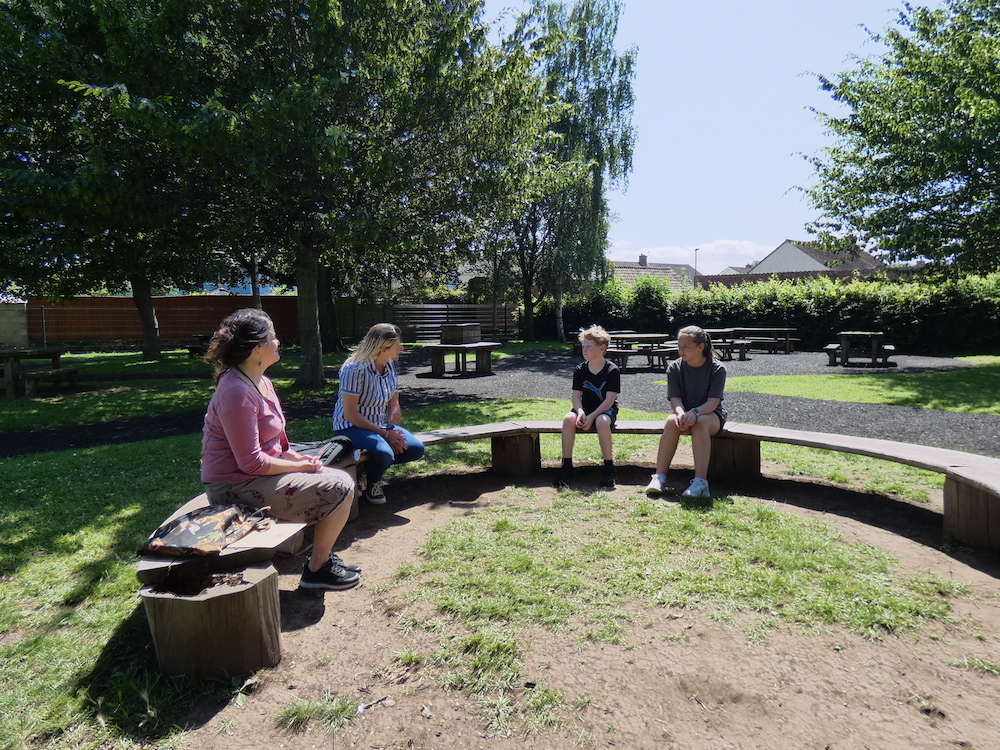
Next we met with Mike, the current Church Warden and Lead bell ringer, as his Dad had been before him. He took us up the bell tower showing us the incredible engineering of the clock (with some similarities to the Future Machine’s hand crank). The clock has recently been adapted for electricity and automation whilst maintaining an option to return it to analogue. It’s workings were beautiful and fascinating, from a time when engineering, technology, aesthetics and craft were hand in glove. We watched as the 15 minutes past bells rang, with the clappers turning and all coming alive, then it returned to the slow heart beat of the minutes in between.

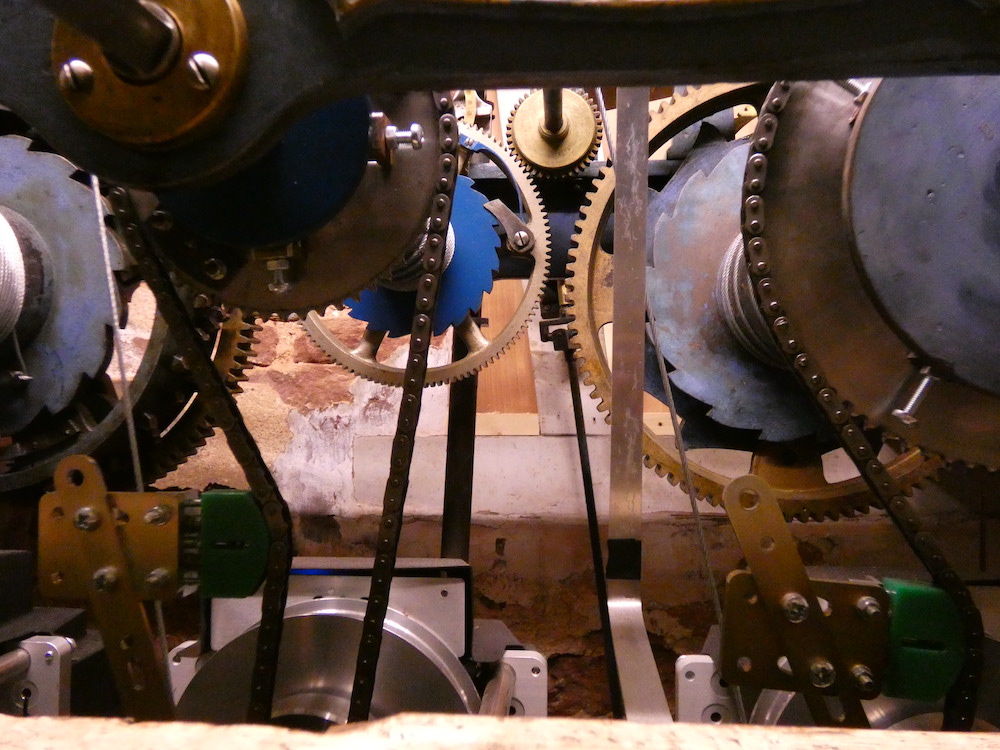
Up the old steps we went, admiring the ropes that kept us steady – that Caroline remembered her Dad attaching to the steep narrow walls when she was young – to the bells themselves. Huge cast iron, shapely, in their wooden wheels. I climbed in and stood on their frame as Mike warned me not to topple over when the bells started. At half past they began, the sound from nowhere (or rather triggered by the clock downstairs) broke through, vibrating through our bodies, the tower, the church, the village . The vibrations continued unbelievably, echoing on for minutes after.

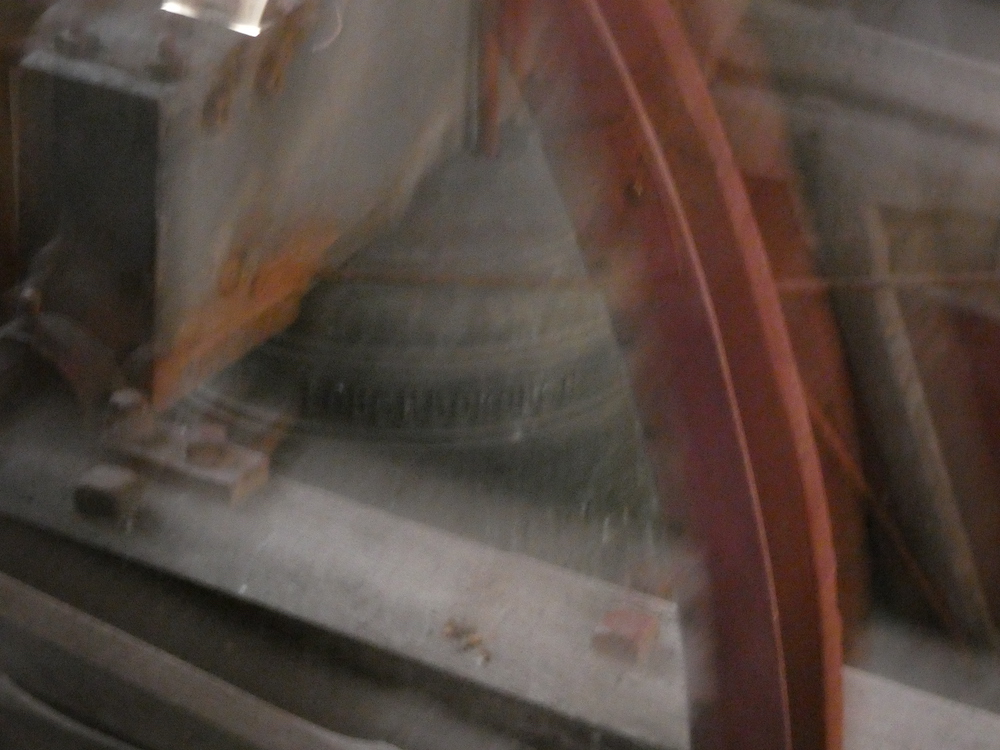
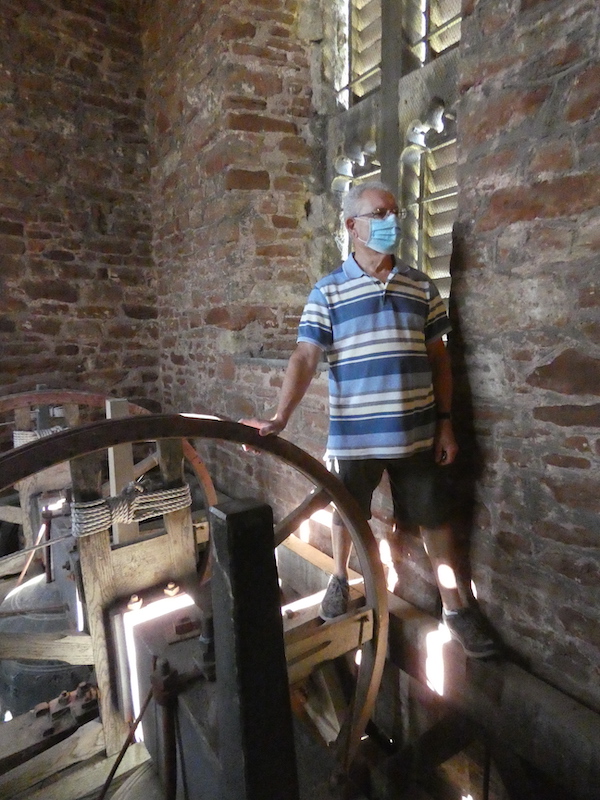
We went up further again to the top of the tower to see the view over the village. Caroline and Mike gave me a remote tour of the village from this high up point, showing how the village had changed since the expansion of Hinkley Point. The fields turned to park and ride, the takeover of the village by EDF for the nuclear power museum, the new National College for Nuclear, the bypass, the new big houses.
On our return to the ground we stopped in the room for the bell ringers. Long ropes coming through the ceiling from the bells above, where Caroline first fell in love with the bells.. that has led to her amazing artworks with bells clocks, pendulums, vibrations and frequencies.
Later, after a lunch with Caroline’s mum in her beautifully cared for garden we went for a long walk around the village, up to the Horticultural College where we hope to work with tree specialists – although they weren’t free to meet us on this visit, up the hill to view the fort in the woods, across the bypass to the dusty lane that Caroline used to ride down, through the fields, we saw a young deer and many rabbits, past the Nuclear College and back into the village.


The next day we drove down the road to the sea, to Kilve, a beach filled with deep time, Jurassic fossils, footprints of the climates and beings that came before us. We walked along the beautiful coastal path, by fields of wheat and wild flowers, with the Atlantic sea on our left. Looming towards us, first hazy then clearer and clearer were the towers, domes and cranes of Hinkley Point. Leading out to sea. Precariously placed near the villages, with coastal erosion and rising sea levels projected into it’s future.
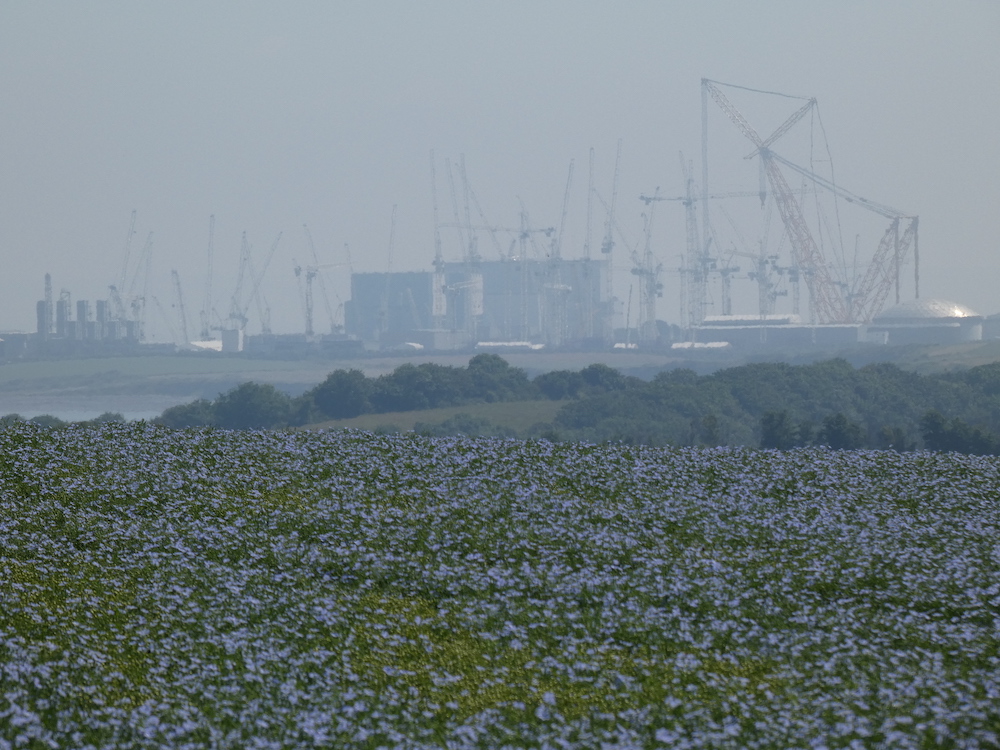
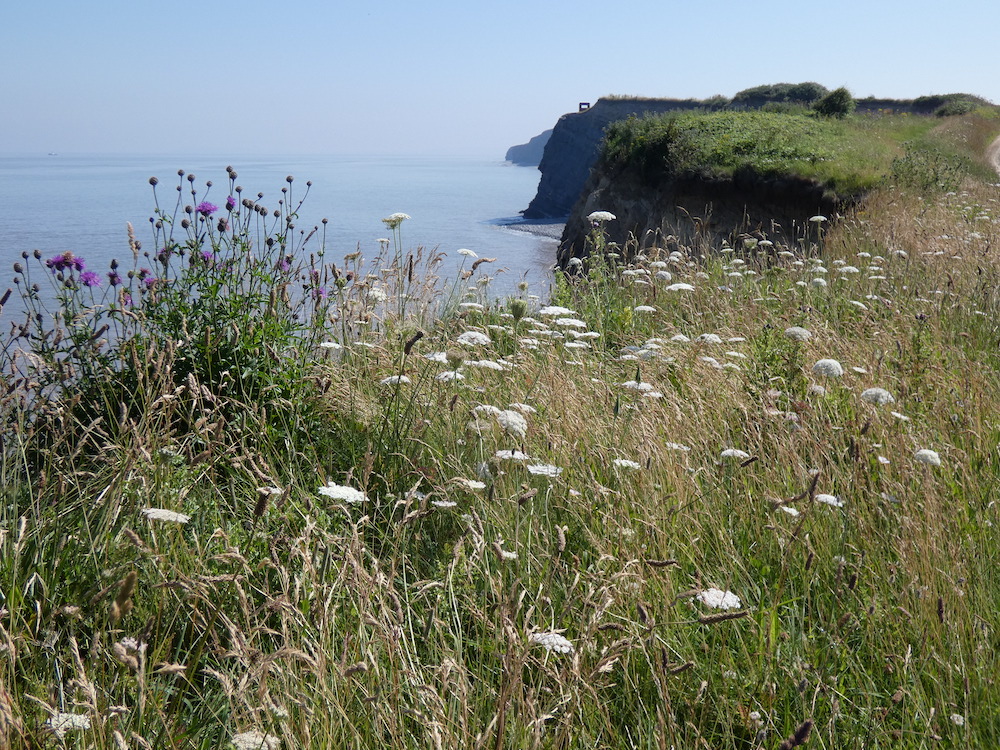
In the afternoon we went to the playing field that Caroline’s Dad created on the edge of the village, to support team building and the communities health and well-being. Caroline planted a tree in the playing fields to celebrate its opening in 1982. The playing fields are now unused, its carpark facilitates a park and ride for people who work at Hinckley Point. Discussions have started about the future of the field. Already, the decreasing involvement of the new and changing population of the village with community activities effects the sports and music activities, bell ringing and local conservation groups that traditionally supported and brought the local community together.
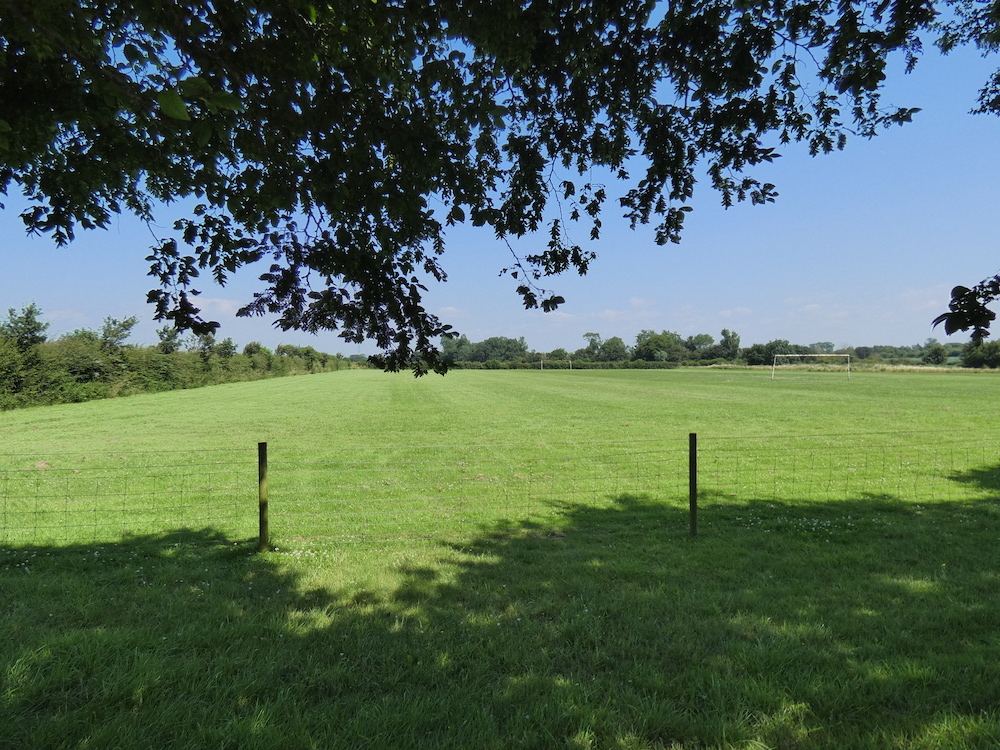
Caroline set up her technology to capture the frequency of the tree she planted as a child, more on this to come here… We took photographs and talked about how a procession of the Future Machine, the Tree Charter Bell and planting more trees on the playing fields, in the school and around the village would be combined into a ritual or special occasion to take place in the village every year. To start November 2022, but possibly with a small launching procession in the new year.
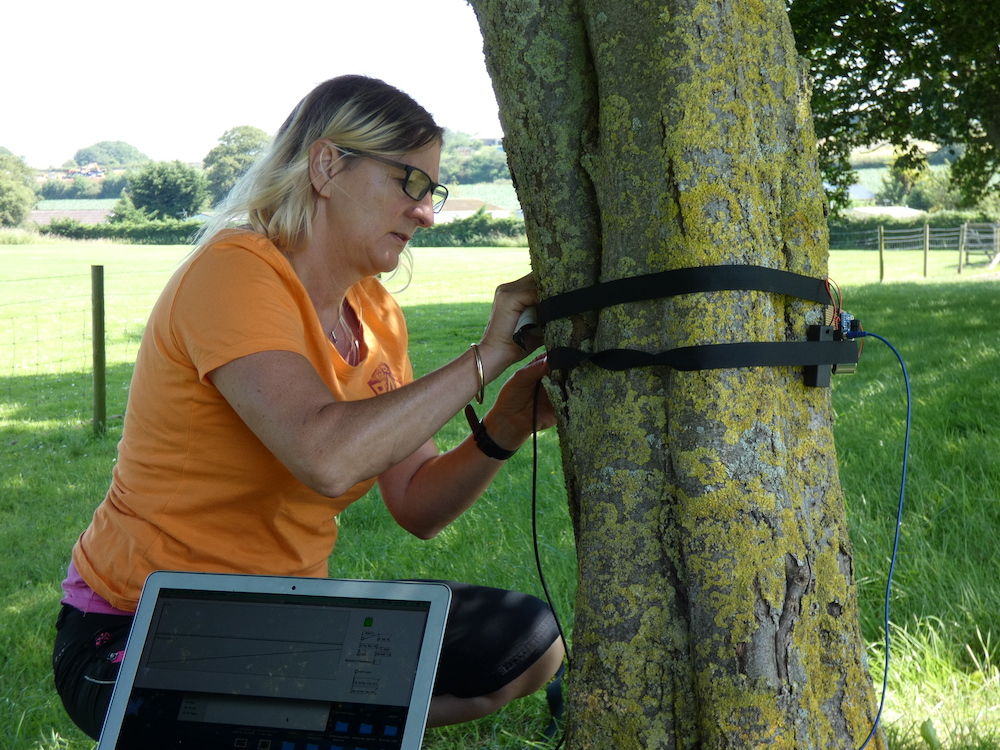
We left instructions for the teachers at Cannington Primary School to collect messages for the future from their classes, to send back to the Future Machine. We will record them onto the machine so that we have a messages from Somerset from 2021 – this second strange disrupted pandemic year. We hope we can return next year to easier times and new opportunities to bring the village together.

